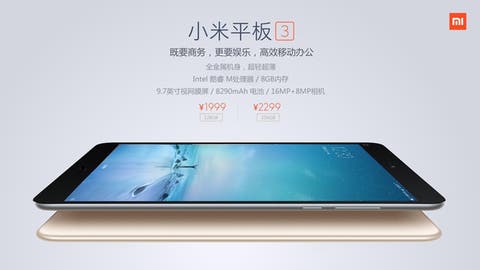Xiaomi isn’t nearly as aggressive in the tablet market as it is with its smartphones. Their last tablet the MiPad 2 was fairly average, and failed to stand out amongst the competition. Now Xiaomi seems to hope they can come back swinging with the recently leaked MiPad 3.
These leaked slides detail quite a bit of the Xiaomi MiPad 3’s specifications. The device is said to have a 9.7-inch 2048 x 1536 IPS display. Other than that, the tablet is said to measure only 6.08mm, and it may also come with a keyboard dock ala other Windows tablets.
Other alleged specifications of the Mi Pad 3 shown off in the slides include the Intel Core m3-7Y30 processor paired with 8GB of LPDDR3 RAM, as well as two choices of eMMC storage (128GB and 256GB). There’s also a very nice 8290mAh battery, which is reassuring. The MiPad 3 is said to feature a fingerprint sensor as well as 16MP rear and 8MP front-facing cameras for snapping pictures.
Curiously, rumours are saying that an Android variant of the Mi Pad 3 is nowhere to be seen, suggesting that Xiaomi has dropped it in favour of the Windows variant. This isn’t really all too shocking when you consider that the Android-powered MiPad 2 wasn’t as well received as its Windows-powered sibling.
While these information are certainly exciting, it’s worth noting that Xiaomi itself has not revealed anything about the Mi Pad 3. Regardless, we’ll find out more on the 30th of December, which is supposedly the launch date of the tablet.
It’ll be interesting to see if the Mi Pad 3 will indeed carry 1,999 Chinese yuan ($228) and 2,299 yuan ($331) price tags for the 128GB and 256GB models respectively.
Follow Gizchina.com on Google News for news and updates in the technology sector.


Xiaomi are not doing well in laptops and tablets. I tried Mi Pad 1 and it was great, but the UI is very bad. It is like a blown up version of Mi UI. There is no optimize for the big screen.
The process is automated. You basically need to do a coupleasure of clicks and prepare the boot disk:
Change the launcher of RemixOS and it becomes a tablet OS. Add gesture control and split screen (marshmallow developers options) and it’s a high end tablet experience.